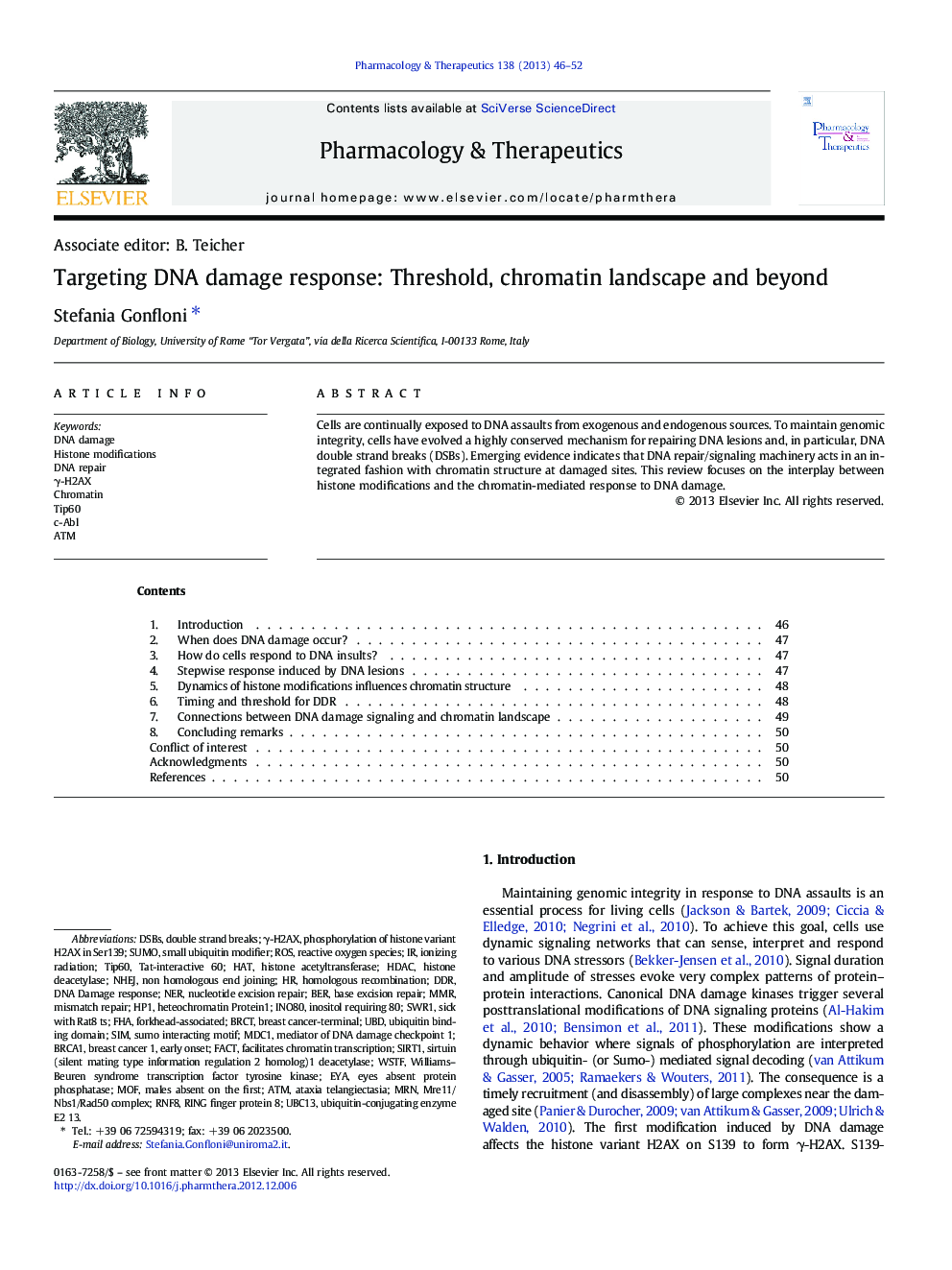| Article ID | Journal | Published Year | Pages | File Type |
|---|---|---|---|---|
| 5844037 | Pharmacology & Therapeutics | 2013 | 7 Pages |
Abstract
Cells are continually exposed to DNA assaults from exogenous and endogenous sources. To maintain genomic integrity, cells have evolved a highly conserved mechanism for repairing DNA lesions and, in particular, DNA double strand breaks (DSBs). Emerging evidence indicates that DNA repair/signaling machinery acts in an integrated fashion with chromatin structure at damaged sites. This review focuses on the interplay between histone modifications and the chromatin-mediated response to DNA damage.
Keywords
UBC13DSBsMRNMMRFHAmDC1Ataxia telangiectasiaBRCTHP1Sirt1Ubiquitin binding domainUbDWSTFRNF8SWR1INO80non homologous end joiningMOFBERDDRγ-H2AXSUMONHEJHDACc-AblNERROSTip60DNA damageEyaionizing radiationDNA repairnucleotide excision repairmismatch repairbase excision repairHistone modificationsFACTATMfacilitates chromatin transcriptionbreast cancer 1, early onsetSIMdouble strand breaksforkhead-associatedHomologous recombinationHistone acetyltransferasehistone deacetylaseDNA damage responseBRCA1ChromatinHATReactive oxygen species
Related Topics
Health Sciences
Pharmacology, Toxicology and Pharmaceutical Science
Pharmacology
Authors
Stefania Gonfloni,
